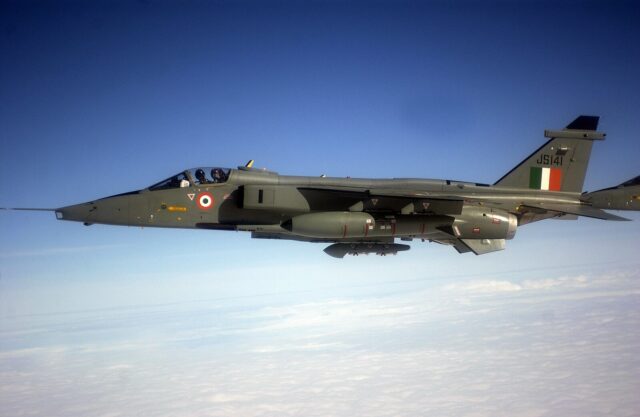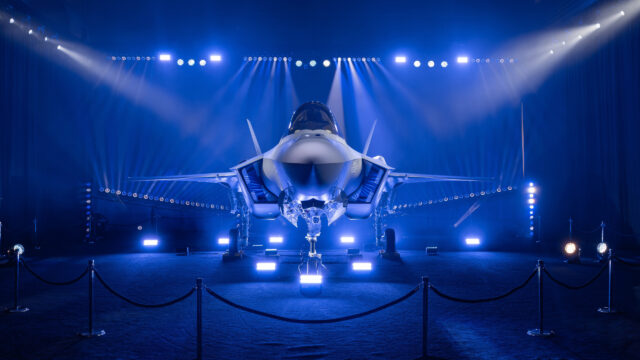UAE eyes South Korea’s KF-21 Boramae fighter jet as it nears production

August 12, 2025

The UAE teases potential order for South Korea’s upcoming KF-21 fighter jet as the aircraft nears serial production. The first 20 examples are expected to be delivered to the South Korean Air Force between 2026 and 2027.
UAE takes interest in South Korea’s new KF-21 fighter jet
As South Korea continues to rapidly develop its KF-21 Bromae fighter jet, the UAE continues to take an interest.
According to information published by the Republic of Korea Air Force on August 7, 2025, Korea and the UAE have conducted what they call a ‘friendship flight’ from Sacheon Air Base in South Gyeongsang Province.

During the event, UAE Deputy Minister of Defence Ibrahim Nasser Mohammed Al Alawi rode in the back seat of a prototype KF-21 as it was escorted by an FA-50, another indigenous Korean warplane. That FA-50 was flown by South Korea’s Chief of Staff, Gen. Lee Yeon-su.

Al Alawi took the opportunity to say both countries plan to forge closer military and technology ties. The UAE has expressed interest in the KF-21 project since 2023, but has stopped short of placing an order.
The KF-21 Boramae: South Korea’s new stealth fighter jet
Both Turkey (with the Kaan) and South Korea are developing advanced low-observable fighter jets that superficially resemble an F-35.
Korea is leading the development of the KF-21, with Indonesia also playing a smaller role and ordering 48 jets. Indonesia had agreed to pay 20% of the development cost, but has consistently failed to make payments. Indonesia and Korea recently agreed to reduce Indonesia’s contribution to 7.5%.

Korea is rapidly developing its fighter jet and plans to bring it into service in late 2026. In July 2025, Korea completed the sixth prototype, and the program has now logged over 1,300 sorties, which is around 70% of the flight tests planned for the Block 1 phase.
The plan is to develop the jet incrementally. So the initial Block 1 phase will carry munitions externally, reducing its stealth. KAI has released a rendering of a future KF-21EX version with internal bays.
Meanwhile, Business Korea has reported the program has reached another milestone as Korea’s Hanwha Systems has begun serial production of an indigenous AESA radar for the jet using “purely domestic technology”.
The jet is intended to replace South Korea’s now-retired F-4 Phantom II and remaining F-5 Freedom Fighter/Tiger II aircraft. The War Zone states, “The KF-21 takes a more measured approach to low-observable design and is intended to bridge the gap between the F-35 and the fourth-generation F-16, in terms of capabilities.”
In collaboration with Korea Aerospace Industries, the government plans to produce up to 120 KF-21 Boramae fighters by the early 2030s. The initial phase commenced in 2024, with the first batch of approximately 20 jets slated for delivery between 2026 and 2027.
The KF-21’s American engine could be a sticking point
The only countries in the world currently able to design and produce high-performance fighter jet engines from start to finish are France, the UK, the US, China, and Russia. All fighter jets, including Sweden’s Gripen, India’s Tejas, and Turkey’s Kaan, have fighter jet engines from these countries.
The KF-21 Boramae, Gripen, and Tejas are all powered by the GE F414 afterburning turbofan engine. This is the same family of engines that powers the F/A-18 Hornet family of Navy fighter jets. Supply issues with the GE F414/F404 engines have held up production of India’s Tejas lightweight fighter jet.

Having US-made engines could be a problem for a potential order from the UAE. Any export of the aircraft is legally subject to US International Traffic in Arms Regulations (ITAR) and other US arms export control laws.
This means every step of a potential purchase would be tied to Washington’s approval, not just at the point of sale, but throughout the aircraft’s life. Any worsening in political relationships could see the UAE restricted or delayed in deploying the KF-21.
The Financial Times recently reported that the United Kingdom has been lobbying Korea to switch to British Rolls-Royce engines. South Korea’s Hanwha Aerospace is working on domestically developed engines, targeting readiness by 2036.
















